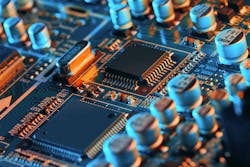Industrial PCs (IPCs) and soft real-time systems—“soft” in this case is the abbreviation for “software” and not a derogatory term—are making huge gains as a prevalent control technology in manufacturing.
The question of the future relevance of advanced IPC-based control systems is both complex and evolving. The latest industrial PCs and soft PLCs, with their real-time performance, built-in functionality for motion control, machine condition monitoring and seamless integration with data acquisition and information-technology (IT) systems, are indeed pushing the boundaries of what's possible in industrial automation.
Get your subscription to Control Design’s daily newsletter.
With the advent of advanced IPC-based control systems and soft PLC solutions, the control landscape is shifting toward flexible, data-centric and integrated systems.
IPC-based systems are capable of offering real-time control. These systems can handle complex tasks that include motion control, machine learning algorithms and data processing, all in real time, and can integrate multiple control functions into a single platform.
Advanced IPCs integrate motion control, which was once only handled by specialized motion controllers. With soft PLCs, you can integrate synchronized motion with other control tasks such as process control, vision systems and robotics, all within the same system.
Many IPC systems offer built-in functionality or easy integration with condition monitoring systems that track the health of machinery and predict maintenance needs. They enable predictive maintenance, improving uptime and reducing costs. Additionally, IPCs seamlessly integrate with Industrial Internet of Things (IIoT) solutions, cloud computing and advanced data analytics platforms. This allows for easy data acquisition, remote monitoring, and data-driven decision-making. Soft PLCs and IPCs can collect, store and analyze real-time data from production lines, providing greater insights into operations.
The trend toward IPC-based control systems will only grow stronger as manufacturing becomes more connected, data-driven and integrated. The rise of Industry 4.0 means that manufacturing systems are increasingly requiring integration between IT and operational technology (OT). IPCs are naturally suited to this convergence, as they are already designed to communicate seamlessly with IT systems such as cloud computing, data analytics platforms and ERP systems.
IPCs allow for flexible and scalable integration with higher-level software, making them the choice for future-ready systems.
PLCs will likely continue to dominate in niche applications where determinism, simplicity, reliability and certification are critical. This includes safety applications, small control systems and industries with legacy systems. While PLCs themselves may not evolve dramatically, they will likely integrate more closely with IPCs and soft PLCs in hybrid systems where PLCs handle simple tasks and IPCs handle complex, data-driven tasks.
In the future, we are likely to see this hybrid approach where PLCs coexist with IPCs in many industrial settings, with PLCs handling straightforward control tasks and IPCs managing more complex and interconnected systems. The full transition to IPCs will depend on specific industry needs, technological advancements and the growing demand for intelligent, connected systems.
About the Author

Joey Stubbs
contributing editor
Joey Stubbs is a former Navy nuclear technician, holds a BSEE from the University of South Carolina, was a development engineer in the fiber optics industry and is the former head of the EtherCAT Technology group in North America.

